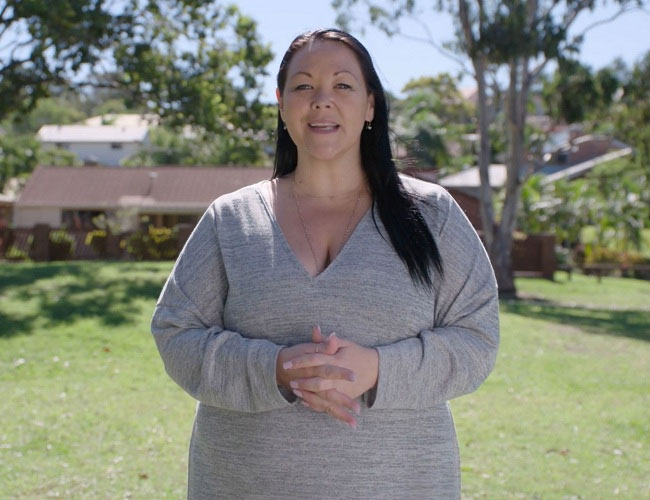A woman implanted a spinal disc with 3D printing technology
Now, the spinal pain has ended with Ms Amanda Gorvin - who had the first surgery to transplant a 3D 3D spinal disc in Australia.
The Australian Society of Engineers has awarded the Centenary Hero title to GS Milan Brandt, Technical Director of the Hi-tech Processing Center of RMIT University (Melbourne, Australia), thanks to the influence of the research project. The rescue that he made.

Amanda Gorvin - Australia's first 3D spinal implant surgeon designed by RMIT University engineers.
Prof. Brandt is the director of the study of the 3D printed spinal implant in the country for the first time in Australia. This implant has been successfully implanted for a female patient named Amanda Gorvin.
Born with a rare spinal defect that caused a vertebra to not fully form, Ms. Gorvin said: 'These pains have tormented my whole life.'
The implants available on the market do not match the special gap on her spine, so they are not suitable for surgery.
That's why RMIT University researchers, medical implant manufacturer Anatomics and neurosurgeon Dr. Marc Coughlan worked together to print and implant implants exclusively for Gorvin.
The team's 3D laser printer can create layers of implants, from titanium metal powder, to finally create a titanium trellis that can support the entire body weight. .
The surgery was successful and after a few days of relaxation, Gorvin was able to walk. A few weeks later, the pain completely disappeared.
The present Miss Gorvin feels that she is very lucky because this piece has returned her normal life. The work of surgeons and engineers working together to create a perfect one-millimeter composite for inclusion in the spine shocked her.

A 3D printed bone implant.
Professor Brandt shared, this is the first time such implants are printed in Australia, and transplanted for patients. Since then, the success of the project has opened new directions for Professor Brandt and the team to design new generation implants for bone cancer patients.
This time, the team collaborated with Stryker (one of the world's leading enterprises in medical technology), Sydney University of Technology, Center for Cooperation in Innovation Research and St Vincent Hospital, in Replacement 3D bone printing is custom size, to replace the parts of the bone that have been removed, to preserve the patient's as much as possible.
Professor Brandt said that working with industry in the industry is central to creating the value of the High-Tech Processing Center, especially in the areas of biomedical, aerospace, defense and mining equipment. .
- Create human bones from stem cells and 3D printing technology
- Reconstruction of titanium pelvis thanks to 3D printing technology
- Real flexible artificial spinal disc
- China: successfully implanted spinal disc
- Magic 3D printing technology
- Build your house using 3D printing technology without using brick
- China successfully implanted 3D blood vessels into monkeys
- Korea: Artificial breast implant with the first 3D printing technology
- Successfully implanted 3D print vertebrae on human body
- New development of digital music composer
- Learn about 3D printing technology
- Build a cluster of houses with the world's first 3D printing technology in the Netherlands
- Technology of printing cells of woodblock prints with the survival rate of nearly 100%
- Diversified 3D printing materials
 13 causes of non-itchy rash
13 causes of non-itchy rash How the mouse with human ears changed the world?
How the mouse with human ears changed the world? The truth about 'fried rice syndrome!
The truth about 'fried rice syndrome! What is dental implant?
What is dental implant?